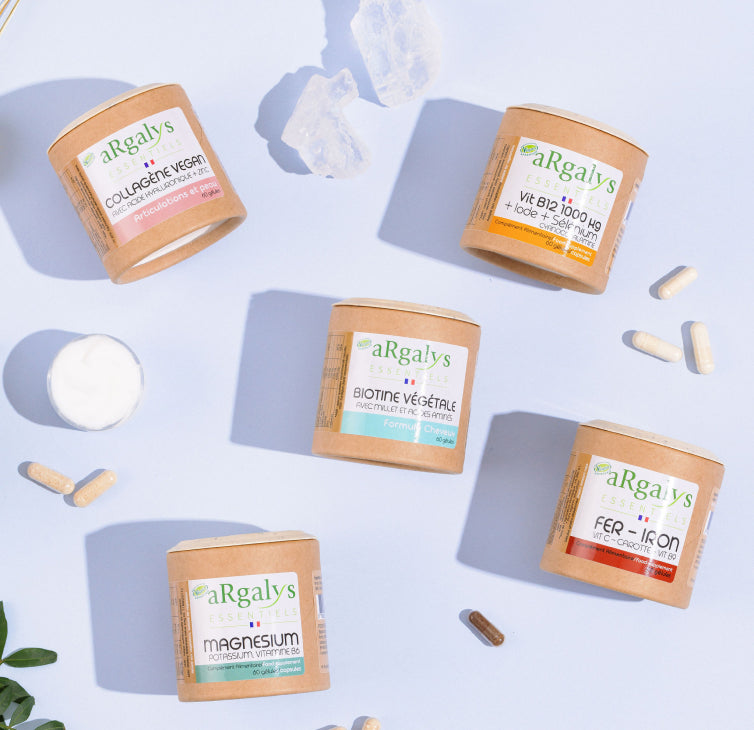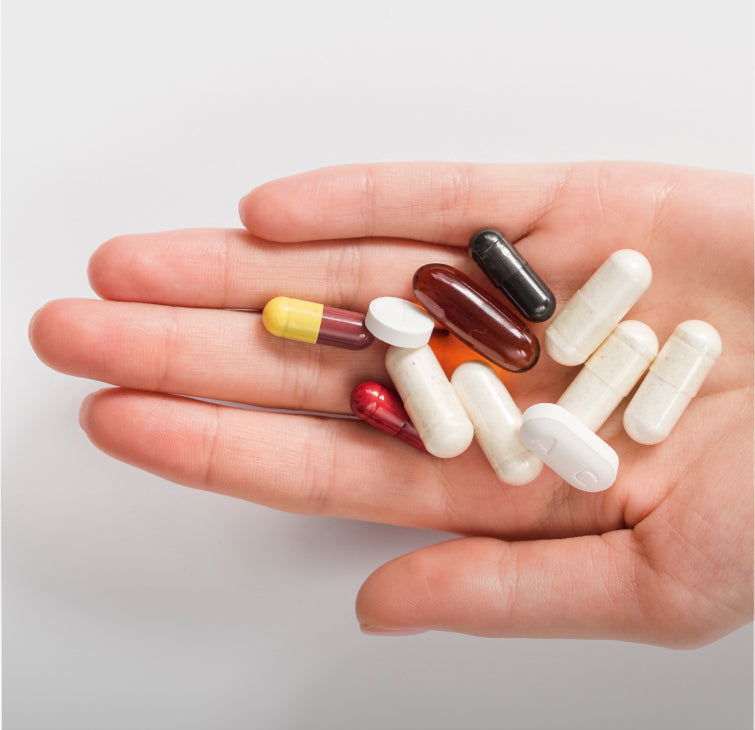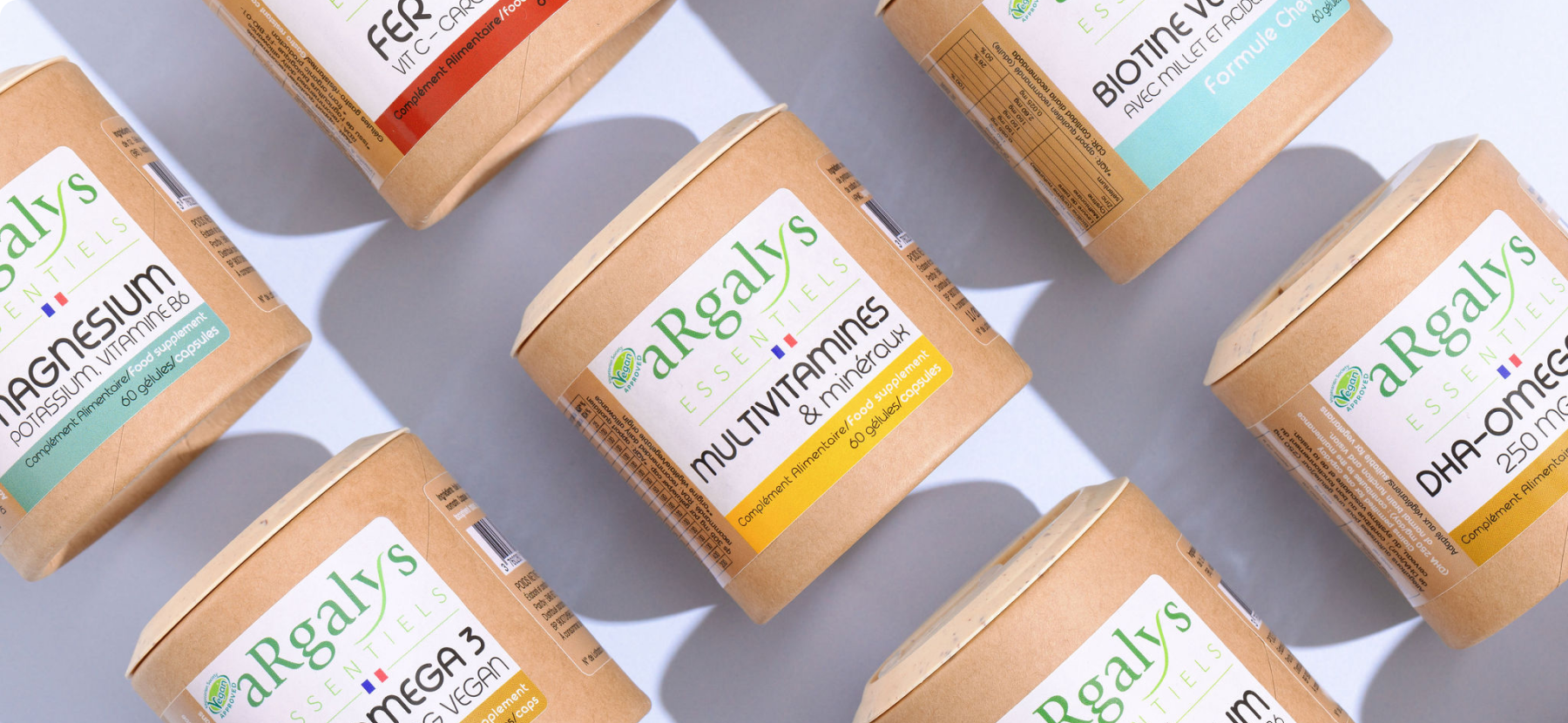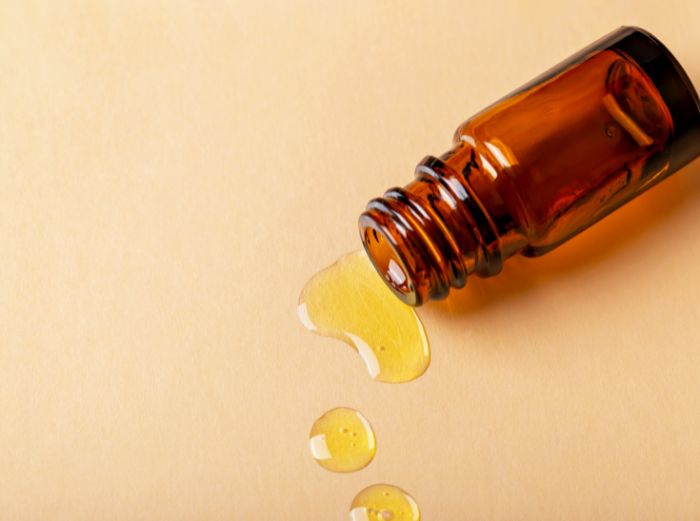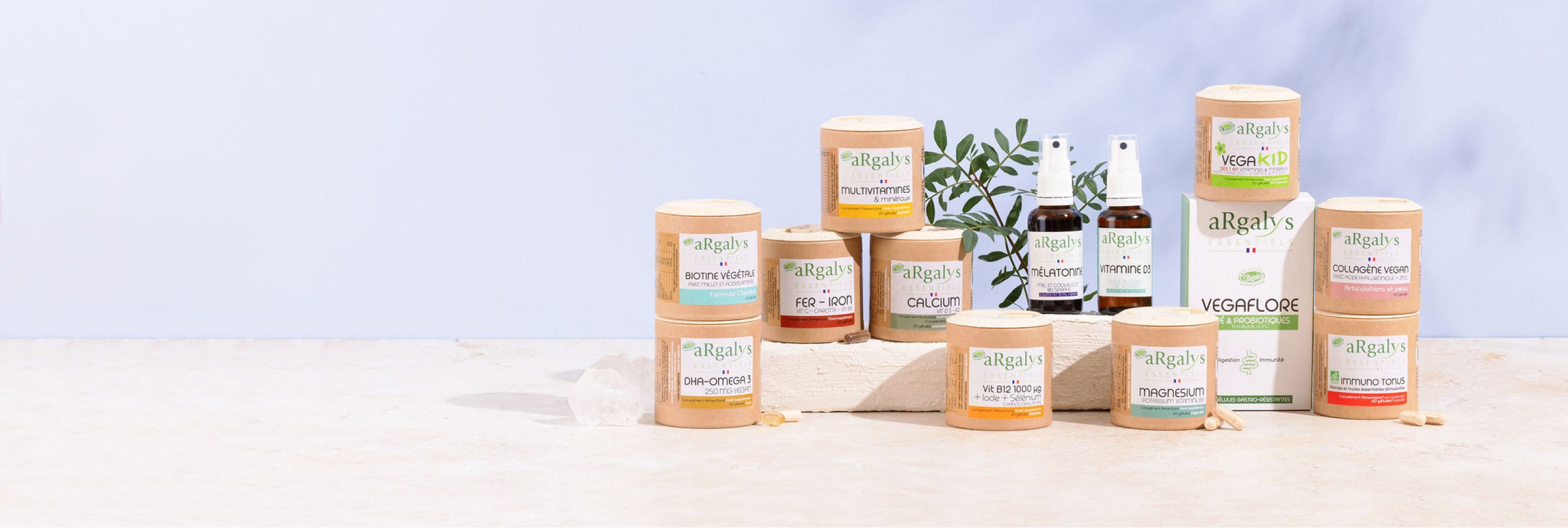What is hyaluronic acid?
Discovered in 1934 in the United States, hyaluronic acid (HA) is a polysaccharide molecule naturally present in the human body. Its unique structure and exceptional ability to retain water give it an essential role in hydration, tissue regeneration, and the viscosity of biological fluids. The body of an adult contains approximately 15 grams of hyaluronic acid , distributed mainly in the skin, eyes, and joints. This polysaccharide is constantly renewed, with a third being broken down and replaced daily.
The health benefits of hyaluronic acid
Hyaluronic acid plays a major role in skin and joint health. In skin tissue, hyaluronic acid increases water retention in intercellular spaces, improving the appearance and suppleness of the skin.
It is also involved in cell renewal and growth and healing. Low levels of hyaluronic acid are correlated with slower healing. Laboratory tests (1) have shown that hyaluronic acid promotes the synthesis of tubulin , a protein essential for cell texture.
At the joint level, this molecule improves the viscosity of synovial fluid and the hydration of cartilage . These actions reduce friction and inflammation, providing increased comfort and better mobility, particularly in patients suffering from osteoarthritis (2, 3).
However, the permanent degradation of hyaluronic acid means that its cosmetic effects are not long-lasting. External supplements must be renewed to maintain the achieved appearance.
Origins and processes for obtaining hyaluronic acid
The quality and purity of hyaluronic acid depends on the production process used.
Historically, hyaluronic acid was extracted from rooster combs , a traditional method associated with a high risk of contamination. Bacterial fermentation, using genetically modified strains such as Bacillus subtilis , later emerged as a biotechnological alternative .
Today, the fermentation process using yeasts and plant substrates (wheat, corn) is preferred, offering a safer solution that meets quality standards. This process guarantees better compatibility with the needs of modern formulations, particularly for oral administration. This is logically the form we have chosen for our food supplement .
How to use hyaluronic acid on a daily basis?
Hyaluronic acid is versatile and can be used in various forms to address specific needs, whether cosmetic or related to joint health. Its two main forms of use are topical application (serums and creams) and oral supplementation .
The use of hyaluronic acid in serum and cream
Hyaluronic acid is a key ingredient in topical skincare, often used in the form of concentrated serums or moisturizers. These products work primarily at the epidermis, where they retain water to smooth and plump the skin. They are particularly suitable for dehydrated skin, providing an immediate feeling of freshness and suppleness.
However, this method has some limitations. Due to the variable molecular size of hyaluronic acid used in topical products, only a fraction penetrates the deeper layers of the skin. High molecular weight molecules remain on the surface, where they create a hydrating barrier , but do not act directly on the dermis. Low molecular weight molecules can penetrate deeper, but their effects remain limited compared to systemic administration . Furthermore, these products require regular application, as topical hyaluronic acid is quickly eliminated by the skin.
Effectiveness of hyaluronic acid in food supplements
Oral administration of hyaluronic acid has been the subject of numerous clinical studies, which confirm its effectiveness.
A daily intake of 100 to 200 mg visibly improves skin hydration as early as three to four weeks, increasing water content and reducing dryness (5). After ten to twelve weeks, studies show a measurable increase in dermal thickness and a reduction in wrinkles , results obtained through placebo-controlled clinical trials. In the context of joint health, oral supplementation helps reduce osteoarthritis pain by increasing hydration and reducing inflammation in the cartilage (4).
Synergy between hyaluronic acid and collagen
Collagen and hyaluronic acid are two key molecules for skin elasticity and joint flexibility.
These two molecules act together to improve skin elasticity , strengthen tissue structures and support joint mobility .
At Argalys, we've combined them in our Pre-Collagen formula, which provides 150 mg of hyaluronic acid per day (two capsules), a dosage validated by scientific studies. It's a unique combination, acclaimed by users for its effectiveness!
Scientific references
-
Hyaluronic acid stimulates human fibroblast proliferation within a collagen matrix.
PubMed -
Absorption of Orally Administered Hyaluronan.
PubMed -
Molecular weight and gut microbiota determine the bioavailability of orally administered hyaluronic acid.
ScienceDirect -
Dietary hyaluronic acid migrates into the skin.
PubMed -
Ingested hyaluronan moisturizes dry skin.
PubMed
 04 74 03 98 80
04 74 03 98 80
